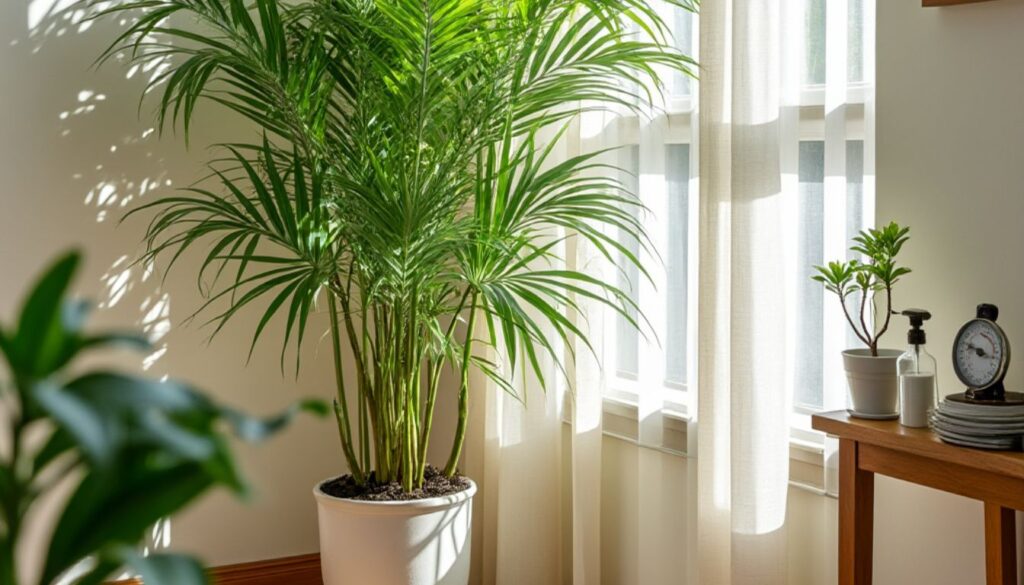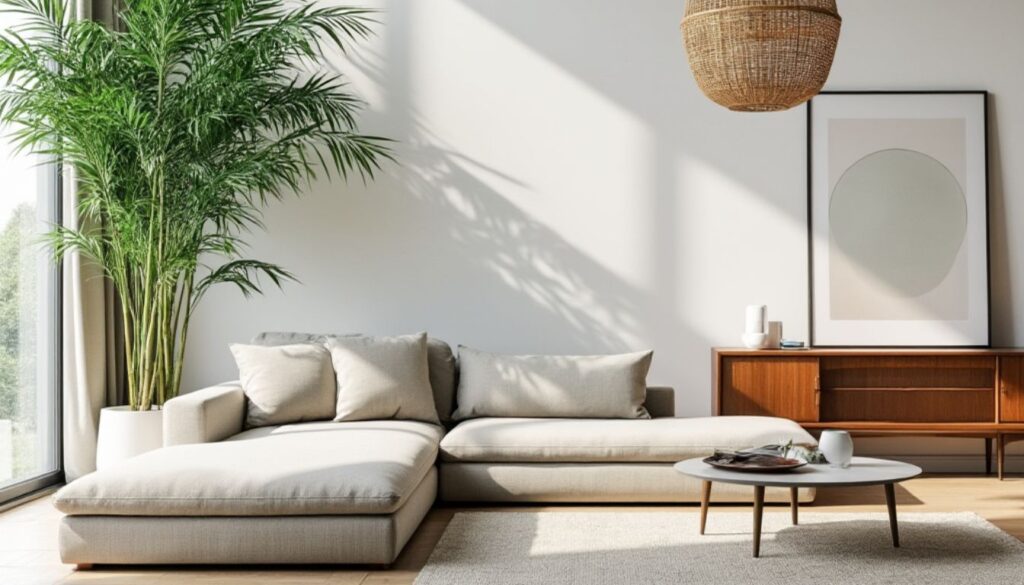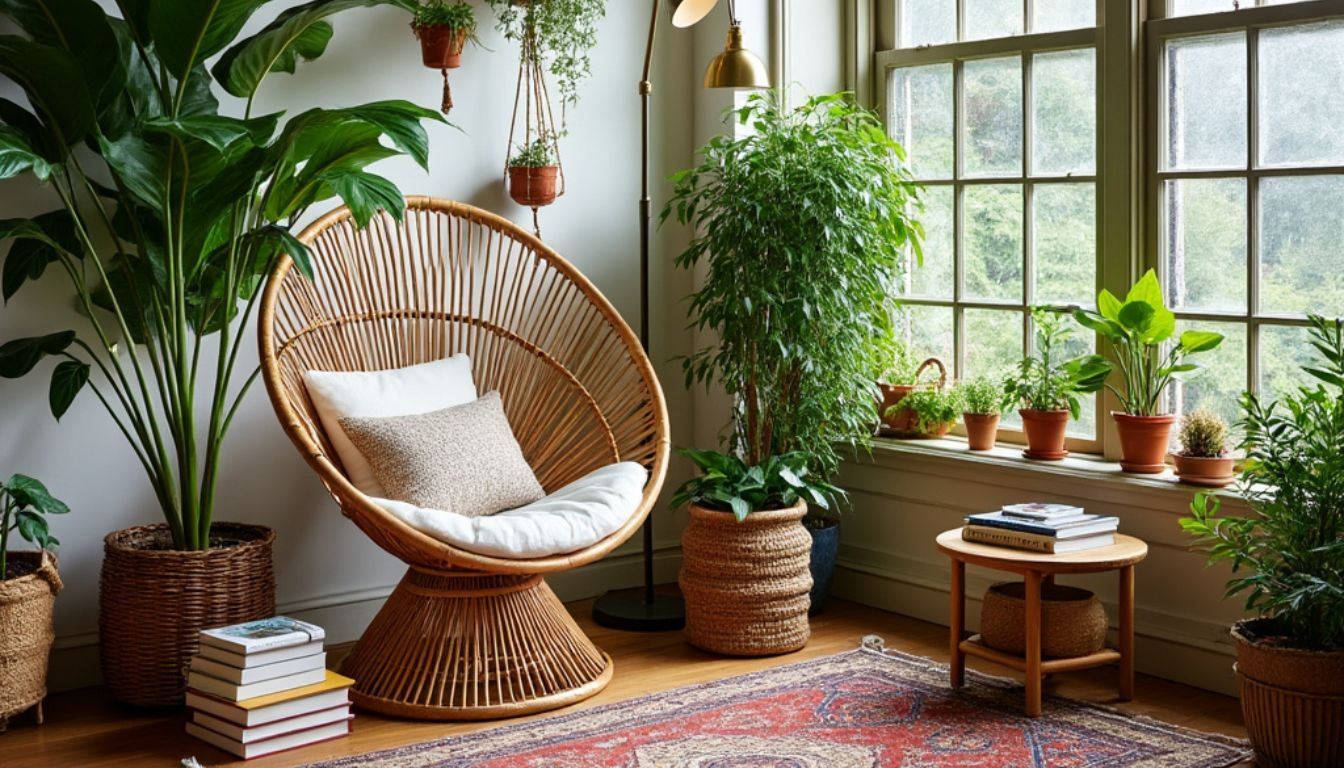If you’re looking to elevate your indoor space with a touch of tropical elegance, the bamboo palm tree might just be your perfect match. Not only does this stunning plant bring a vibrant splash of greenery into your home, but it also purifies the air, making your environment feel fresher and more inviting. Imagine walking into a room filled with natural beauty that also contributes to your well-being.
Growing a bamboo palm indoors is easier than you might think. With the right care and conditions, this resilient plant can thrive and become a focal point in your decor. Whether you’re a seasoned plant parent or a beginner, I’ll guide you through the simple steps to cultivate your lush oasis right at home. Let’s dive into the world of bamboo palms and discover how to transform your living space into a serene retreat.
Benefits Of Growing Bamboo Palm Tree Indoors
Growing a bamboo palm tree indoors brings numerous advantages. This plant adds beauty and improves the air quality in my home.
Air Purification
Bamboo palms effectively filter out indoor toxins. They absorb harmful substances like formaldehyde and benzene. This process creates fresher air, making my living space healthier. Studies show they can remove up to 80% of indoor air pollutants. With a bamboo palm in my home, I breathe easier.
Aesthetic Appeal
The bamboo palm boasts lush, feathery fronds. Its tropical look instantly brightens up any room. This plant complements various decor styles, from modern to traditional. Adding one creates a calming atmosphere. Using bamboo palms as natural decor brings a touch of nature indoors. The vibrant greenery enhances my home’s overall charm.
Ideal Conditions For Bamboo Palm Growth – Growing Bamboo Palm Tree Indoors

Bamboo palms thrive indoors with the right conditions. Creating a suitable environment enhances their growth and keeps them healthy.
Light Requirements
Bamboo palms prefer bright, indirect light. Too much direct sunlight can scorch their leaves. I position my plant near a window with sheer curtains for optimal light. If the light is too dim, the plant may grow slowly or lose its vibrant color. A grow light can also help if natural light is insufficient.
Temperature and Humidity
Bamboo palms favor warm temperatures between 65°F and 80°F. I avoid placing them near drafts or heating vents to maintain consistent warmth. High humidity benefits these palms. I mist my bamboo palm regularly or use a humidity tray. This keeps the air around the plant moist and encourages healthy growth. If humidity drops too low, the leaves may brown at the tips, reminding me to step up my care routine.
Soil and Potting Recommendations – Growing Bamboo Palm Tree Indoors
Choosing the right soil and pot is crucial for growing a healthy bamboo palm indoors. It’s not just about looks; it’s about giving the plant an optimal environment to thrive.
Choosing The Right Soil
I recommend using a well-draining potting mix that retains moisture without becoming soggy. A blend of peat moss and perlite works wonders. This mix ensures that roots get the oxygen they need while keeping them hydrated. Avoid heavy soils, as they can lead to root rot. If you want to supercharge your mix, consider adding some orchid bark for extra drainage. Your bamboo palm will thank you!
Watering And Fertilization Strategies – Growing Bamboo Palm Tree Indoors

Watering and fertilizing your bamboo palm play key roles in its health and growth. Keeping the right balance promotes lush foliage while avoiding root rot or nutrient deficiencies.
Watering Frequency
I water my bamboo palm when the top inch of soil feels dry. This usually occurs every 1 to 2 weeks, depending on my home’s humidity and temperature. To avoid issues, I always check the soil moisture first. During summer, plants may need more frequent watering due to higher temperatures. In winter, reducing the frequency helps prevent overwatering. If the leaves start yellowing, it might signal overwatering.
Types of Fertilizers
When it comes to fertilization, I opt for a balanced liquid fertilizer. A ratio of 10-10-10 works wonders for my bamboo palm. I apply this once a month during the growing season, which lasts from spring to late summer. In winter, I skip fertilization, as the plant rests and doesn’t need extra nutrients. If I notice slow growth or pale leaves, I consider a boost. Organic options like fish emulsion also provide nutrients without toxic additives. Choosing the right fertilizer helps keep my indoor jungle vibrant and healthy.
Common Pests and Diseases – Growing Bamboo Palm Tree Indoors
Bamboo palms can face a few pests and diseases, but with proper care, they stay healthy. Regularly inspecting your plant helps catch any issues early.
Identification and Prevention
Spider mites are tiny pests that love to hide on the undersides of leaves. You might notice tiny webs or yellow spots on the foliage. Another unwanted visitor is the mealybug, which looks like little cotton balls on stems. If you spot them, act fast. Maintain humidity and gently mist the leaves to deter these pests. Regularly checking for signs keeps your bamboo palm safe.
Fungal infections can also occur, often causing spots or mold. Ensure your palm has good air circulation by not crowding it with other plants. Don’t leave water standing; it breeds trouble.
Treatment Options
If pests invade, don’t panic. A simple solution is to wash the foliage with water. For more stubborn issues, use insecticidal soap or neem oil. Spray it directly onto affected areas. Always follow the label instructions, and test on a small leaf first.
For fungal infections, removing affected leaves helps. Treat the plant with a fungicide designed for indoor plants. Apply it as directed, and don’t forget to maintain good hygiene by cleaning any fallen debris around the base.
Keeping an eye on your bamboo palm ensures you catch problems early. Healthy plants are less likely to attract pests or diseases. By being proactive, you create a thriving indoor oasis.
Before You Go – Growing Bamboo Palm Tree Indoors
Growing a bamboo palm indoors is a rewarding experience that brings both beauty and health benefits to my living space. With the right care and attention, these resilient plants thrive and flourish, creating a serene atmosphere. I love how they purify the air and add a touch of tropical elegance to any room.
By following the guidelines for light, humidity, and watering, I can ensure my bamboo palms remain healthy and vibrant. Regular monitoring for pests and diseases keeps them in top shape, allowing me to enjoy their lush foliage. Embracing this delightful indoor plant not only enhances my home’s decor but also contributes to a fresher and more inviting environment. Don’t forget to add The Herb Prof to your favorites so you don’t miss out on any new articles.
References – Growing Bamboo Palm Tree Indoors
Little Herb Encyclopedia, by Jack Ritchason; N.D., Woodland Publishing Incorporated, 1995
The Ultimate Healing System, Course Manual, Copyright 1985, Don Lepore
Planetary Herbology, Michael Tierra, C.A., N.D., Lotus Press, 1988
Handbook of Medicinal Herbs, by James A. Duke, Pub. CRP Second Edition 2007
The Complete Medicinal Herbal, by Penelope Ody, Published by Dorling Kindersley
Check the Following Articles
How to Grow Burro’s Tail: A Simple Guide
Climbing Spinach: A Nutritious and Space-Saving Delight
Discover the Best Pizza Cheese Herb Recipe
Unlocking the Turkey Tail Mushroom Benefits For Health
Frequently Asked Questions – Growing Bamboo Palm Tree Indoors
1. What is a bamboo palm tree and why is it ideal for indoors?
A bamboo palm tree is a tropical indoor plant known for its attractive, feathery fronds and air-purifying abilities. It enhances home decor while filtering indoor toxins, making it an excellent choice for both new and experienced plant owners.
2. How does a bamboo palm tree purify the air?
Bamboo palms effectively remove indoor pollutants such as formaldehyde and benzene, filtering up to 80% of these toxic substances from the air. This contributes to a fresher and healthier living environment.
3. What are the ideal light conditions for a bamboo palm?
Bamboo palms thrive in bright, indirect light. Too much direct sunlight can scorch their leaves. Placing them near a window with sheer curtains is recommended for optimal growth.
4. What type of soil is best for growing bamboo palms?
A well-draining potting mix that retains moisture without becoming soggy is ideal for bamboo palms. A blend of peat moss and perlite, possibly mixed with orchid bark for drainage, works best to prevent root rot.
5. How often should I water my bamboo palm?
Water your bamboo palm when the top inch of soil feels dry, typically every 1 to 2 weeks. Adjust watering frequency based on seasonal changes, with more frequent watering needed in summer and less in winter.
6. What should I use for fertilization?
Use a balanced liquid fertilizer with a 10-10-10 ratio, applying it monthly during the growing season. You can also consider organic options like fish emulsion, and skipping fertilization in winter for best results.
7. What pests affect bamboo palms and how can I prevent them?
Common pests include spider mites and mealybugs. To prevent infestations, maintain humidity, mist leaves regularly, and inspect plants frequently for early signs of pests.
8. How can I treat fungal infections on my bamboo palm?
To treat fungal infections, ensure good air circulation, avoid standing water, and remove affected leaves. You can also use fungicides for more significant issues, following the product’s instructions carefully.

